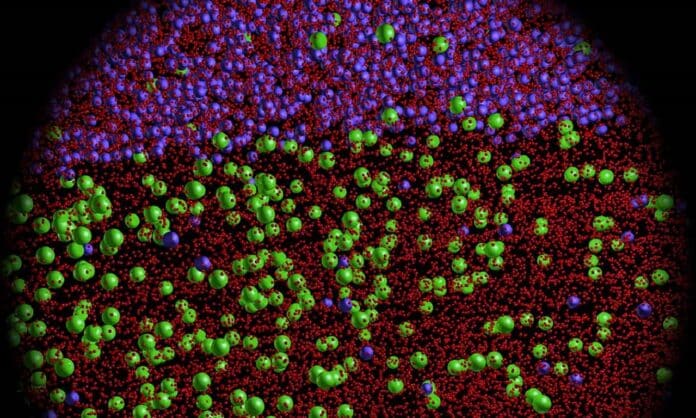A group of researchers has developed a new class of titanium alloys that are strong and not brittle under tension by combining alloy and 3D-printing process designs.
The new study has the potential to broaden the applications of titanium alloys, increase sustainability, and promote new alloy designs.
Their discovery indicates effectiveness for developing a new class of more sustainable high-performance titanium alloys for use in aerospace, medicinal, chemical engineering, space, and energy sectors.
The concept was led by RMIT University and the University of Sydney, in conjunction with Hong Kong Polytechnic University and the Melbourne-based company Hexagon Manufacturing Intelligence.
According to RMIT’s lead Researcher, Distinguished Professor Ma Qian, the team included circular economy thinking in their design, which is promising for making their novel titanium alloys from industrial waste and low-grade materials.
Qian from RMIT’s Centre for Additive Manufacturing in the School of Engineering said, “Reusing waste and low-quality materials has the potential to add economic value and reduce the high carbon footprint of the titanium industry.”
The titanium alloys developed by the researchers are made up of a combination of two types of titanium crystals known as alpha-titanium phase and beta-titanium phase, each of which corresponds to a different arrangement of atoms.
This class of alloys has served as the titanium industry’s backbone. Since 1954, these alloys have been created principally by combining titanium with aluminum and vanadium.
The researchers looked into using oxygen and iron, two of the most potent stabilizers and strengtheners of alpha- and beta-titanium phases that are abundant and inexpensive, to create strong and ductile alpha-beta titanium-oxygen-iron alloys.
The researcher said, “One challenge is that oxygen – described colloquially as ‘the kryptonite to titanium’ – can make titanium brittle, and the other is that adding iron could lead to serious defects in the form of large patches of beta-titanium.”
The team printed its alloys from metal powder using Laser Directed Energy Deposition (L-DED), a 3D printing technique ideal for producing massive, intricate objects.
Qian said, “A key enabler for us was the combination of our alloy design concepts with 3D-printing process design, which has identified a range of alloys that are strong, ductile, and easy to print.”
These new alloys’ appealing qualities result from their carefully developed microstructure, which includes segments with high oxygen content that are strong and segments with low oxygen content that are ductile.
Co-lead researcher and University of Sydney Pro-Vice-Chancellor Professor Simon Ringer said, “This research delivers a new titanium alloy system capable of a wide and tunable range of mechanical properties, high manufacturability, enormous potential for emissions reduction and insights for materials design in kindred systems.”
The researcher said, “We’ve engineered a nanoscale gradient of oxygen in the alpha-titanium phase, featuring high-oxygen segments that are strong and low-oxygen segments that are ductile, allowing us to exert control over the local atomic bonding and mitigate the potential for embrittlement.”
The critical enabler is the specific distribution of oxygen and iron atoms inside and between the alpha- and beta-titanium phases.
Lead author Dr. Tingting Song, RMIT Vice-Chancellor’s Research Fellow, said the team is “at the start of a major journey, from the proof of our new concepts here, towards industrial applications.”
She said, “There are grounds to be excited – 3D printing offers a fundamentally different way of making novel alloys and has distinct advantages over traditional approaches.”
Co-lead author Dr. Zibin Chen, who joined Hong Kong Polytechnic University from the University of Sydney in the later stages of the collaboration, said, “There’s a potential opportunity for the industry to reuse waste sponge titanium-oxygen-iron alloy, ‘out-of-spec’ recycled high-oxygen titanium powders or titanium powders made from high-oxygen scrap titanium using our approach.”
He said, “Oxygen embrittlement is a major metallurgical challenge not only for titanium but also for other important metals such as zirconium, niobium, and molybdenum and their alloys.”
He added, “Our work may provide a template to mitigate these oxygen embrittlement issues through 3D printing and microstructure design.”
Researcher said. “In many ways, this work showcases the power of Australia’s national collaborative research infrastructure strategy and sets the scene for extending this strategy into advanced manufacturing.”
This study was funded and supported by the Training Centre in Surface Engineering for Advanced Materials (SEAM) and the Australia Research Council’s (ARC) Discovery Program.
Journal Reference:
- Song, T., Chen, Z., Cui, X., etal. Strong and ductile titanium–oxygen–iron alloys by additive manufacturing. Nature. DOI: 10.1038/s41586-023-05952-6
